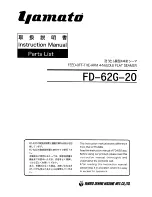
EN
Carefully cleaning the solution tank ensures the floor is cleaned
properly. Proceed as follows to clean the solution tank:
1. Take the appliance to the dedicated dirty water drainage area.
ATTENTION
: The place this operation is carried out should
comply with current environmental protection regulations.
2. Check that the plug (1) on the power cable (2) has been taken out
of the socket (3) of the mains supply(
Fig.1
), and if not, disconnect
it.
ATTENTION:
You are advised to always wear protective
gloves, to avoid the risk of serious injury to your hands
.
ATTENTION
: To prevent damaging the power cable,
disconnect the plug from the mains socket by directly pulling
the plug and not the cable.
3. Fix the handlebar in a position of about 45° to the ground, press
the uncoupling lever (4) (
Fig.2
) and turn the handlebar into
position (
Fig.3
). When the handlebar is in position, release the
uncoupling lever (4).
CHECKING AND CLEANING THE SOLUTION TANK (OPTIONAL)
4. Uncouple the solution tank tap tie chain (5) in the coupling in the
tap control handle (6) (
Fig.4
).
5. Remove the water distribution pipe (7) in the hole on the brush
head (8) (
Fig.5
).
6. Loosen the closing knob (9) (
Fig.6
) and position the top brackets
more than halfway up the column.
7. Remove the solution tank from the control column.
8. Remove the solution tank cap (10) (
Fig.7
).
9. Rinse the inside with a jet of water, if necessary use a spatula
to remove the sludge that has accumulated at the bottom of the
tank.
10. Repeat the operations in reverse order to reassemble all the
parts.
TROUBLESHOOTING
This chapter lists the most common problems linked with the use of the appliance. If you are unable to resolve the problems with
the information given here, please contact your nearest assistance centre.
DISPOSAL
To dispose of the appliance, take it to a demolition centre or an authorised
collection centre.
Before scrapping the appliance, it is necessary to remove and separate out
the following materials, then send them to the appropriate collection centres in
accordance with applicable environmental hygiene regulations:
• Pad holders or brushes
• Electric and electronic parts*
• Plastic parts
• Metallic parts
(*) In particular, contact your distributor when scrapping electric and electronic
parts.
18
18
18
1
2
3
4
1
2
3
4
5
6
10
7
5
8
6
7
9
Summary of Contents for FMD20
Page 2: ......
Page 3: ...ENGLISH 4 ESPAÑOL 20 FRANÇAIS 36 EN ES FR 3 3 3 ...
















































